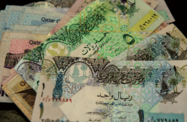Given present jitters around the Gulf – as investors, businesses and governments face the prospect of sustained oil and gas price softening – international ratings agency S&P’s recent reaffirmation of Qatar’s high investment grades came as a welcome vote of confidence for many in Doha.
Yet, while the agency set out reassuring reasons why Qatar was worth this vote there is much in S&P’s September report that warrants attention if Qatar is to avoid any future downgrades from the global ratings giants.
First the good news, though. On September 18, S&P reaffirmed an AA rating for long-term issue bonds from Qatari Diar Finance and SoQ Sukuk. At the same time, it also reissued an A-1+ rating for Qatar’s foreign and local currency sovereign credit.
The agency justified this by referring to the State’s “strong economic fundamentals”, which give it powerful external and fiscal positions. The policy of diversification was also praised, with the expectation that Qatar’s non-oil sector “should remain buoyant” thanks to major public investment and a growing population.
This will help counteract any continued weakening of the oil and gas market. The fall in hydrocarbon prices, caused by global factors such as heightened competition from US shale oil and increasing LNG production from other countries, also comes alongside expected falling production in Qatar’s mature oil fields.
Yet while this does mean reduced revenue streams for the government, S&P concluded that the State’s commitment to maintaining its public expenditure programme would mean it will still need to come up with the funds – particularly in the run up to the 2022 World Cup. While this commitment may lead to a deterioration in fiscal and external balances – and a slowing of GDP growth from roughly 6% during the last three years to around 4% between 2015 and 2018 – the existing buffers should be able to absorb the shock.
Indeed, in terms of buffers, Qatar has considerable foreign assets, with its net liquid asset position estimated by S&P at around 100% of GDP in 2015. This is also likely to be maintained. Meanwhile, steps taken to diversify LNG markets and lock prices into long-term contracts are softening the blow of falling oil and gas revenues.
All well and good, then. But the report also offers some important words of caution.
First of all, if the government’s gross liquid net asset position were to deteriorate significantly – which might occur if oil and gas prices continue to tumble – this would likely cause a rethink in the rating, S&P stated. How likely this is to come about is up for debate, however, with Goldman Sach’s worst-case speculation of a potential $20 a barrel some way short of the US Energy Information Administration’s $53.57 prediction for 2016.
Second, S&P also states that if Qatar were to implement significant reforms in transparency and data quality – regarding government assets in particular – this might lead to the grade improving.
While the first of the above reservations would represent the further working out of an external risk about which Qatar can do relatively little, the latter is something the State can act upon – and indeed, perhaps should act upon, even if the oil price shoots off the chart tomorrow.
While providing more accurate and up-to-date numbers is something Qatar has been working on, with many improvements made, clearly, S&P thinks there is still room for improvement.
It is not alone in this either, with the IMF Article IV consultations also continuously stressing this point. The IMF also argues that having accurate numbers available enables more precise planning, allowing developing risks to be spotted early and effective countermeasures taken.
This is a point that many will be hoping does not get lost following the reaffirmation of Qatar’s otherwise excellent ratings. After all, even an A grade student can still aim higher.
---This original article from OBG originally appeared in Qatar's The Edge magazine, November 2015 issue.

